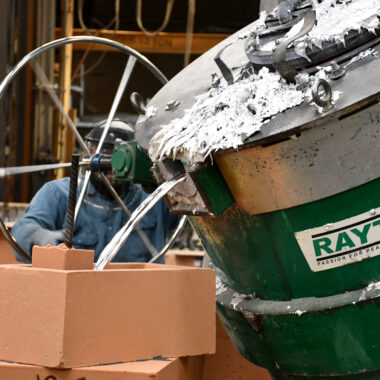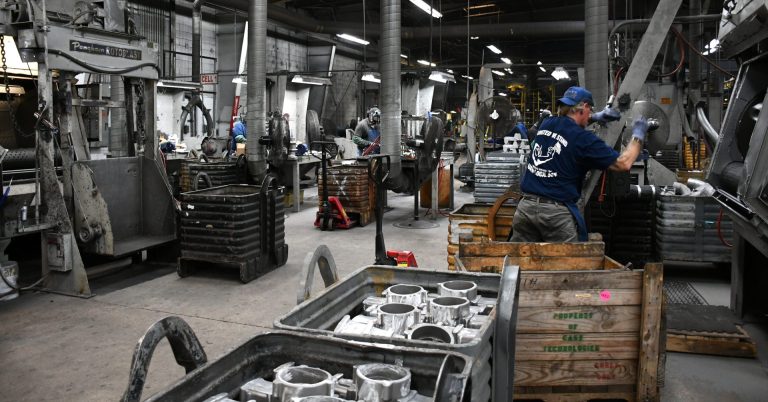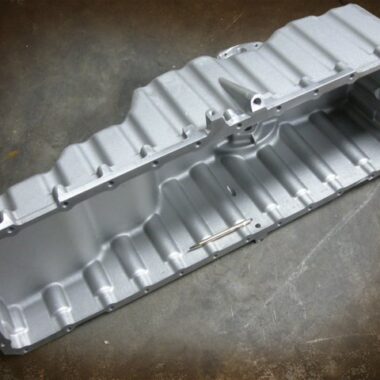Accuracy in Practice: The Art About Aluminum Casting
Accuracy in Practice: The Art About Aluminum Casting
Blog Article
Crafting Excellence: Just How to Achieve High-Quality Light Weight Aluminum Castings Each Time
In the realm of aluminum spreading, the search of excellence is a continual trip that requires a careful technique and a keen understanding of the ins and outs included. Achieving consistent premium aluminum castings demands a comprehensive understanding of the processes, from choosing the suitable alloy to performing precise mold styles and carefully controlling spreading criteria.
Recognizing Aluminum Spreading Procedures
Aluminum casting procedures, crucial in the production industry, entail the complex change of molten aluminum into solid forms through a collection of very carefully controlled steps. Understanding these procedures is critical to attaining top quality aluminum spreadings regularly - about aluminum casting. The key approaches made use of in aluminum casting are pass away spreading, sand spreading, and investment casting

Each of these processes has its advantages and is picked based on factors like complexity, volume, and desired finish of the aluminum casting. about aluminum casting. Comprehending the details of these techniques is crucial for manufacturers aiming to produce high-quality light weight aluminum castings consistently
Choosing the Right Aluminum Alloy
Choosing the suitable light weight aluminum alloy is an essential choice in the manufacturing of high-grade light weight aluminum spreadings. The option of alloy significantly affects the buildings and characteristics of the last product. Different light weight aluminum alloys provide differing levels of toughness, deterioration resistance, machinability, and thermal conductivity. When choosing an aluminum alloy for spreading, it is necessary to consider the particular requirements of the application to make sure optimal efficiency.
One of the most typically made use of aluminum alloys for spreading is A356. This alloy uses outstanding castability, high toughness, and good rust resistance, making it ideal for a wide variety of applications. 6061 aluminum alloy is favored for its premium weldability and good mechanical homes. For applications needing high toughness, 7075 aluminum alloy is a preferred selection due to its phenomenal strength-to-weight proportion.
In addition to mechanical buildings, factors to consider such as cost, availability, and post-casting processes should additionally influence the option of the appropriate light weight aluminum alloy. By meticulously examining these variables, manufacturers can ensure the manufacturing of high-grade aluminum castings that meet the desired requirements.
Applying Appropriate Mold Design
Creating an efficient mold design is vital for making certain the effective production of high-quality light weight aluminum castings. Proper mold and mildew style plays a significant duty in achieving the desired features of the end product. To apply a successful mold and mildew style, variables such as product flow, cooling down prices, and part geometry should be very carefully taken into consideration.
One key aspect of mold design is ensuring correct filling and solidification of the light weight aluminum within the mold dental caries. This includes developing jogger and gating systems that help with smooth steel circulation and protect against problems such as air entrapment or insufficient filling. Furthermore, including air conditioning networks into the mold and mildew design aids regulate solidification rates and minimize the threat of porosity or shrinking issues.

Controlling Casting Parameters

Ensuring Post-Casting Top Quality Checks
To keep the excellent quality of aluminum spreadings, comprehensive post-casting top quality checks are vital. After the casting process is completed, it is critical to make sure that the last products fulfill the desired criteria and specs. Among the primary high check these guys out quality checks involves checking the surface finish of the spreadings to determine any kind of issues such as porosity, fractures, or surface area abnormalities. This visual evaluation is often supplemented by non-destructive testing techniques like ultrasonic screening or dye penetrant assessment to spot inner flaws that may jeopardize the honesty of the casting.
Dimensional accuracy is one more essential aspect that should be confirmed during post-casting high quality checks. Dimensions of crucial measurements and resistances must be taken to verify that the spreadings adapt the called for requirements. In addition, mechanical homes such as hardness, tensile strength, and influence resistance might require to be examined via product screening to make sure that the castings possess the required strength and sturdiness for their designated application.
Conclusion
In conclusion, attaining high-quality light weight aluminum spreadings needs a complete understanding of the casting processes, picking the ideal alloy, creating molds effectively, managing casting parameters diligently, and performing post-casting high quality checks faithfully. By adhering to these actions, producers can consistently generate aluminum castings that satisfy the highest requirements of quality and efficiency.
Achieving consistent high-grade aluminum spreadings demands a comprehensive grasp of the procedures, from choosing the appropriate alloy to carrying out precise mold and mildew designs and diligently regulating casting criteria. The primary techniques used in light weight aluminum casting are die spreading, sand spreading, and investment spreading.
Financial investment spreading, likewise recognized as accuracy spreading, involves developing wax patterns that are covered in ceramic to create molds.Choosing the suitable aluminum alloy is a vital decision in the manufacturing of top quality aluminum spreadings.Ensuring precise control over spreading specifications is important for preserving uniformity and high quality in light weight aluminum casting manufacturing.
Report this page